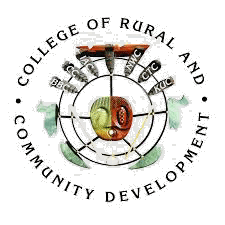
Lesson Overview and Goals
By the end of Lesson 4, you should be able to
- count in Unangam Tunuu,
- know some basic facts about the development and complexities of the number terms in Unangm Tunuu,
- use the singular, dual, and plural numbers on nouns and verbs, and
- use the 1st, 2nd, and 3rd person in statements and questions (that is, in sentences with verb forms in the indicative and conjunctive verb moods)
Vocabulary
 Tunun / Vocabulary
Tunun / Vocabulary
Listen to the vocabulary words and numbers – Sound Lab Lesson 4 Tracks 1-2. Work on learning the words by sound and by sight. See also the vocabulary flip cards in the ‘Test Your Knowledge’ section.
If the audio above does not play, download the .mp3 file here
If the audio above does not play, download the .mp3 file here
| skuulax̂‚ | school |
| ulax̂‚ | house |
| ukuuskax̂‚ | window |
| satmalix̂‚ | door |
| laampax̂‚ | lamp |
| kandaraasix̂‚ | pencil |
| pirux̂‚ | pen |
| fuutax̂‚ | ruler |
| stuulux̂‚, stuuluĝix̂‚ | table |
| stuulchikax̂‚ | chair |
| rubusuunkax̂‚ | shirt |
| anaĝix̂‚ | something, thing |
| iĝadanax̂‚ | phrase, sentence |
| qanaang | how many |
| matalix | to have |
| alqutalix | to be what, to be how |
| alux̂‚sxalix | to be written |
Numiran / Numbers
| ataqan | one |
| aalax | two |
| qaankun | three |
| sichin | four |
| chaang | five |
| atuung | six |
| uluung | seven |
| qamchiing | eight |
| sichiing | nine |
| atix̂‚ | ten |
| atix̂‚ ataqan | eleven |
| algidim atix̂‚ | twenty |
| algidim atix̂‚ ataqan | twenty one |
| qaankudim atix̂‚ | thirty |
| sichidim atix̂‚ | fourty |
| chaangidim atix̂‚ | fifty |
| atuungidim atix̂‚ | sixty |
| uluungidim atix̂‚ | seventy |
| qamchiingidim atix̂‚ | eighty |
| sichiingidim atix̂‚ | ninety |
| sisax̂‚ | one hundred |
| aalax sisax̂‚ | two hundred |
| tiisichax̂‚ | one thousand |
Vocabulary Note: kandaraasix̂‚ ‘pencil’ comes from Russian karand ¡sh ‘pencil;’ in Bergsland 1994:225, it is listed as kalandaasa-x̂‚, karandaasa-x̂‚. The Pribilovian speakers consistently metathesize (reverse) the sounds.
In this Unit, we introduce the cardinal numbers. The ordinal numbers are mostly formed from the ordinal numbers by compounding the number with the word (h)iisix̂‚ ‘the X-th’:
| ataqan | ‘one’ | intaang-iisix̂‚ (from itaang- ‘first, for the first time’) | ‘first’ |
| aalax | ‘two’ | aal(a)g-iisix̂‚ | ‘second’ |
| qankun | ‘three’ | qankun-iisix̂‚ | ‘third’ |
Expand your vocabulary: ‘the names of the months’
Once you have mastered the vocabulary given in this lesson, learn the following additional vocabulary, for the purposes of the exercises. The words can be found either in the Lexicon at the end of the textbook or in the Aleut Dictionary (Bergsland 1994); if you use the Aleut Dictionary, be sure to verify that you are using a word attested in the Eastern dialect:
To be X years old, to cost, dollar, to be expensive (to cost a lot), to be cheap (to not cost a lot); learn various items that can be bought, such as food items, furniture, houses, etc.
Pronunciation - Consonant clusters
 Pronunciation
Pronunciation
Listen to Sound Lab Lesson 4 Tracks 3-5 for this section.
If the audio above does not play, download the .mp3 file here
If the audio above does not play, download the .mp3 file here
If the audio above does not play, download the .mp3 file here
A sequence of consonants in a word is called a consonant cluster (often symbolized by CC). When both consonants are the same (as in nn or tt), they are called geminate consonants. In Unangam Tunuu, there are no geminate consonants except in rare cases as a result of a process called syncopation, in which an intervening vowel is lost (as in yuug(i)gaadakux̂‚ ‘he/she is young’). There are, however, a large number of consonant clusters involving different consonants, many of which are different from those typically found in English words. As a result, they can be challenging for the language learner. Here are some general notes regarding the Unangan consonant clusters: (see Bergsland 1997:23ff for a more complete description of consonant clusters in Unangam Tunuu):
Consonant clusters in Unangam Tunuu are found at the beginning of a word and in the middle of a word; they are not generally found word-finally, unless a final syllable has been dropped (or is not pronounced).
Word initially, the first element of a consonant cluster (known as C1) may consist of the following sounds; note that aside from s, these are all sounds that involve stopping the flow of air through the mouth before releasing the air (hence they are known as stops):
t, ch, k, q, s
The second element (or C2) may consist of the following sounds; note that these are sounds that can be enunciated over a long period of time (hence they are known as continuants):
d, x, g, x̂‚, ĝ‚, m, hm, n, hn, ng, hng, l, y
Some combinations are more frequent than others; thus t and s are by far the most common C1 of an initial consonant cluster, and x, ng, and y are very common as C2.
Examples:
- slux̂‚ ‘year’
- chngatux̂‚ ‘sea otter’
- tmax̂‚ ‘long seaweed’
- txin ‘you, self’
- chyulix ‘to squeeze out’
Loanwords from Russian have allowed a number of new consonant combinations, such as
- xliibax̂‚ ‘bread’ (from Russian xl ©b)
- priistinax̂‚ ‘dock’ (from Russian pr stan’)
In the middle of a word, we may find a cluster of two or three consonants (CC or CCC). In CCs, there are generally either two continuants or a stop or s and a continuant (in either order):
- adgaayux̂‚ ‘pink salmon’
- tumhdalix ‘to shoot’ (note that /hd/ is an aspirated consonant, not two separate consonants)
- asax̂‚talix ‘to be called’
- atxax̂‚six ‘to be straight, right, correct’
- aygaxsix ‘to walk’
Some combinations are quite rare, as in x̂‚x (hux̂‚xix ‘rain pants’); conversely, in loanwords, and in syncopated words, other patterns of combination may appear:
- lupaatkax̂‚ ‘shovel’ (from Russian lop ¡tka; note combination of two stops tk)
- ting saak’tikuqing ‘I am getting skinny’ (from ting saakutikuqing)
In CCC’s,
- C1 tends to be m, ng, x, x̂‚, or l
- C2 tends to be a t, ch, or s
- C3 tends to be a x or x̂‚
- ixchxingin ‘his neck’
- Alaxsxix̂‚ ‘Alaska’
- aqaltxin ‘(from where) do you come’
Oral exercises
Practice the following words (focus on tx, sx):
- chitaayatxin
- alqutaadaltxin
- awaltxin
- aslisxaan
Practice the following words (focus on g):
- ayagax̂‚
- ayagaadax̂‚
- achigalix
- qam agalaa
Practice the following words (focus on x̂‚tx, x̂‚sx):
- aluĝ(i)kux̂‚txin
- tunux̂‚takux̂‚txin
- ukuchxikux̂‚txin
- awakux̂‚txin
- alux̂‚sxalix
Grammar 1 - 2nd Person indicative
Grammar
Listen to Sound Lab Lesson 4 Tracks 6-11 for the Grammar Sections
If the above audio files do not work, download:
Track 6 .mp3 file here;
Track 7 .mp3 file here;
Track 8 .mp3 file here;
Track 9 .mp3 file here;
Track 10 .mp3 file here;
Track 11 .mp3 file here;
So far, we have focused on the forms that are most commonly heard in conversations. In this lesson, we will look at some less commonly heard forms, the 2nd person indicative and the 1st person conjunctive. They are less common because in general, in normal conversations, we typically talk about ourselves or about third parties, rather than about the person we are in fact talking to. However, in context, these forms are perfectly acceptable, and knowing how they are formed will help in understanding more complex grammatical structures in later units. We will also look at simple non-singular forms of nouns.
2nd person indicative
In Lesson 3, we saw how to form the 1sg and 3sg indicative:
chitaayakuqing ‘I am reading.’
chitaayakux̂‚ ‘He/she is reading.’
To say ‘you are reading’, you simply add the ending txin to the 3sg form. Txin can mean several things; one of these is ‘you’:
chitaayakux̂‚-txin ‘You are reading.’
Extra information
Why is txin added to the 3rd person form? The 3rd person form is really just a default form. Historically, here is how scholars think the Unangan endings came about. The pronouns ting ‘I’ and txin ‘you’ used to be independent words; they gradually became so closely associated with the verb that they became person endings:
chitaayaku-x̂‚-ting > chitaayaku-qing – ‘I am reading.’
chitaayaku-x̂‚-txin > chitaayaku-x̂‚txin – ‘You are reading.’
chitaayaku-x̂‚ – ‘He/she is reading.’
The verb maqaĝilakax̂‚ ‘he or she is alright, fine’ is structurally a negative form; it literally means ‘he or she is not bad:’
maqaĝi-laka-x̂‚
to feel bad-negative indicative-3sg
The 2nd person form is formed like other verbs, with txin: maqaĝil(a)kax̂‚txin.
Grammar 2 - 1st Person conjunctive
1st person conjunctive
In Lesson 3, we also saw how to form questions using the conjunctive. It is most common to ask someone directly what he or she is doing, or to ask about what a third party is doing, as in the following examples:
‘What are you doing?’
‘What is Peter doing?’
It is far less common to ask about what you yourself are doing. However, given the right context, you can hear 1st person conjunctive questions, as in the following examples:
‘Now what was I doing???’ (absent-mindedness)
‘What did I say?’ (parent-child dialogue)
1sg conjunctive forms include the personal pronoun ting after the conjunctive mood suffix:
Alqutax̂‚ ma-l-ting? ‘What am I doing?’
Aluĝim malgaa / Written exercises
Change the 2nd person questions into 1st person questions:
- Kalikax̂‚ chitaayaltxin ee?
- Alqutax̂‚ asax̂‚taltxin?
- Qanaang sistran mataltxin?
- Unangam Tunuu aqataltxin ee?
- Gulaayaltxin ee?
- Qanaang kandaraasin mataltxin?
Grammar 3 - Alqutax̂‚ vs. alqutalix
Alqutax̂‚ vs. alqutalix
Look at the following two sentences:
| Alqutax̂‚ asax̂‚talix? |
‘What is his/her name’ = ‘what is he/she called?’ |
| Alqutalix? | ‘How is he/she?’ |
Alqutax̂‚ and alqutalix are very similar words, and they come from the same base, alquta- ‘what’, but they work differently. Alqutax̂‚ is used when the answer is a noun:
Alqutax̂‚ asax̂‚talix? – ‘What is she called?’
Nadiisdax̂‚. – ‘Nadiisdax̂‚.’
Alqutalix is used when the answer is a phrase or sentence:
Braataan alqutalix? – ‘How is your brother?’
Ix̂‚am(a)nakux̂‚. – ‘He is fine.’
Sometimes, because words, phrases, and concepts don’t translate exactly from English to Unangam Tunuu, this might not be obvious. Look at the following example:
Alqutalix ‘mother’ Unangam Tunugan ilan ix̂‚tadatxin?
‘How do you say ‘mother’ in Unangam Tunuu?
The simple answer to this question is usually anaadax̂‚. This is a shortcut. What you are really saying is:
‘Anaadax̂‚ is how it is said.’
That is why alqutalix is used, instead of alqutax̂‚. For now, you may have to just memorize phrases with these two words, but you can already start to figure out why one is used in some phrases and the other is used in other phrases.
Grammar 4 - Number marking on nouns
Grammar 4. Number marking on nouns
The noun ending -x̂‚, which we have seen on all nouns up to this point, indicates a simple, unpossessed, single thing: it is an ending that indicates singular number. When speaking of more than one person, place, thing, etc., older Unangam Tunuu made a distinction between dual and plural endings. The dual ending -x was used to denote two things; today, it is mostly used for naturally occurring pairs, such as eyes, ears, hands, and so forth:
- dax̂‚ – ‘eye’
- dax – ‘a pair of eyes, two eyes’
- chax̂‚ – ‘hand’
- chax – ‘a pair of hainds, two hands’
The plural ending on simple, unpossessed nouns in Unangam Tunuu is —n; traditionally, this was used to denote three or more things:
- skuulax̂‚ – ‘school’
- skuulan – ‘schools’
- ayagax̂‚ – ‘woman’
- ayagan – ‘women’
The plural ending -n is much more often used now when referring to two things that are not naturally occurring pairs. It is not uncommon to hear something like the following:
aalax tayaĝun ‘two men’
The word aalax ‘two,’ has the dual ending; but the word tayaĝun has the plural ending. Although there are exercises provided to learn the dual form in this lesson, you may not always hear it.
Usage notes:
It is useful to know how to count and how to talk about numbers, and groups of things; however, be aware that the expression of number does not necessarily translate exactly between English and Unangam Tunuu. For example, the sentence ‘my house has four windows’ may be better expressed as Sichin ukuuskan ulang kugan akun ‘There are four windows on my house.’ We will only practice very basic sentences with human subjects (e.g. ‘I have one house,’ or ‘how many books do you see?’).
Likewise, plural nouns in a sentence may have an effect on the verb(s) in that sentence; in fact, the rules of sentence agreement and pluralization are somewhat complicated. In the following exercises, plural nouns will either be found by themselves (that is, not combined with others, as in ‘apples’ rather than ‘apples and oranges’) or as the object of a sentence.
As in English, the noun modified by a number may be left out in casual speech. For example, if someone asks Qanaang kalikan chitaayalix ‘How many books is he/she reading?’ one could easily answer aalax ‘two’ or Aalax chitaayakux̂‚ ‘He/she is reading two (books).’
Finally, one very useful expression to know is slux̂‚talix ‘to be X years old,’ literally ‘to have X years,’ as in Mariiyax̂‚ algidim atix̂‚ sichin slux̂‚takux̂‚ ‘Mary is 24 years old.’
Culture Notes
Culture notes : On number and counting in Unangam Tunuu
As mentioned before, dual number was much more commonly used in Unangam Tunuu prior to the 1950s. Today, in the speech of the Pribilof Islands, dual is especially still used for naturally occurring pairs, but much less with non-natural pairs. What constitutes a ‘naturally occurring pair’ is also culturally specific. For example, dual in Unangam Tunuu was also used to denote an object that has two symmetrical halves: achiking ‘my back’ (Bergsland 1994:53). Some old dual forms have had different fates in the different dialects; for example, the common expression for ‘parents’ in the Pribilofs is anaadax̂‚ amaya adaadax̂‚ ‘mother and father’ whereas in Eastern Unangam Tunuu from the Aleutian Chain, the old dual form anakin (dual of anax̂‚ ‘mother’) has been maintained.
As we see in this last example, a change in number may affect the intrinsic meaning of the word. This is true in many languages, including both English and Unangam Tunuu. Thus, the plural form of a word may refer to one thing made up of multiple subparts, such as ‘stairs’ in English. In Unangam Tunuu, the word for ‘nose’ is anĝusin, literally ‘nostrils.’ The word kalikax̂‚ is somewhat more complicated: kalikax̂‚ means ‘piece of paper’ to many speakers, whereas the plural form kalikan refers to ‘a collection of papers, a book.’ The same speaker may use the word kalikax̂‚ for either ‘paper’ or ‘book’ depending on the situation; likewise, different speakers (from a single dialect area) may preferentially use one or the other form for ‘book.’ As in English, some words are only regularly used in the dual or plural form (e.g. kalikan ‘book’ for some speakers).
The Unangax̂‚ counting system was originally based on a ‘vigesimal’ system, or a system based on 20, as with its relatives the Eskimo languages. Only traces of this old system are left in the records; for example, Attuan anguli(x) hatix ‘thirty’ literally means ‘without a half ten,’ or in other words ‘one half (of twenty) from the next twenty’ (Bergsland 1997:570). The first 10 numbers are still obviously based on the hands. In the following chart, the number 5 is derived from the word chax̂‚ ‘hand.’ Notice the symmetry in the construction of the numbers 1-4 and the derived numbers 6-9 (according to Bergsland (1997:485-6), -Vng means ‘the quantity of X in …’).
| ataqan | atuung (> ata-Vng) |
| aalax | uluung (> ula-Vng, cf. Attuan ulax ‘two’) |
| qankun | qamchiing (> *qamt-Vng) |
| sichin | sichiing (> sichi-Vng) |
| chaang (> cha-Vng, from chax̂‚ ‘hand’) | atix̂‚ |
The etymology of many of these words is unclear, but there seems to be a clear relationship with the Eskimo system of counting, which used the hands and feet as units for counting. Thus, ataqan seems to be relatable to the root for ‘to be attached, connected’ (cf. atausiq ‘one’ from ‘adherence, what is indivisible’ in Inuit, Dorais 2010:145), and atix̂‚ ‘ten’ may be from a root describing an outward or upward motion (i.e. the position of the fingers as stretched up or out, Bergsland 1994:570; cf. Inuit qulit ‘the upper part,’ Dorais 2010:145).
Since at least the 19th century, most of the higher units of ten in Unangan dialects have been expressed as multiplications of 10 (algidim atix̂‚ ‘twice ten’); and intermediate units have been expressed as they are today since the beginning of the 20th century in most cases. For more details, see Bergsland (1994:570-571).
Test Your Knowledge
 Self-Study Written Exercises
Self-Study Written Exercises
Written exercises (Lesson 4 Self-Study Exercises – will open in a new tab in a Google Doc)
[qdeck] [q]skuulax̂‚
[a]school
[q]ulax̂‚
[a]house
[q]ukuuskax̂‚
[a]window
[q]satmalix̂‚
[a]door
[q]laampax̂‚
[a]lamp
[q]kandaraasix̂‚
[a]pencil
[q]pirux̂‚
[a]pen
[q]fuutax̂‚
[a]ruler
[q]stuulux̂‚, stuuluĝix̂‚
[a]table
[q]stuulchikax̂‚
[a]chair
[q]rubusuunkax̂‚
[a]shirt
[q]anaĝix̂‚
[a]something, thing
[q]iĝadanax̂‚
[a]phrase, sentence
[q]qanaang
[a]how many
[q]matalix
[a]to have
[q]alqutalix
[a]to be what, to be how
[q]alux̂‚sxalix
[a]to be written
[q]school
[a]skuulax̂‚
[q]house
[a]ulax̂‚
[q]window
[a]ukuuskax̂‚
[q]door
[a]satmalix̂‚
[q]lamp
[a]laampax̂‚
[q]pencil
[a]kandaraasix̂‚
[q]pen
[a]pirux̂‚
[q]ruler
[a]fuutax̂‚
[q]table
[a]stuulux̂‚, stuuluĝix̂‚
[q]chair
[a]stuulchikax̂‚
[q]shirt
[a]rubusuunkax̂‚
[q]something, thing
[a]anaĝix̂‚
[q]phrase, sentence
[a]iĝadanax̂‚
[q]how many
[a]qanaang
[q]to have
[a]matalix
[q]to be what, to be how
[a]alqutalix
[q]to be written
[a]alux̂‚sxalix [/qdeck] [qdeck] [q]one
[a]ataqan
[q]two
[a]aalax
[q]three
[a]qaankun
[q]four
[a]sichin
[q]five
[a]chaang
[q]six
[a]atuung
[q]seven
[a]uluung
[q]eight
[a]qamchiing
[q]nine
[a]sichiing
[q]ten
[a]atix̂‚
[q]eleven
[a]atix̂‚ ataqan
[q]twenty
[a]algidim atix̂‚
[q]twenty one
[a]algidim atix̂‚ ataqan
[q]thirty
[a]qaankudim atix̂‚
[q]fourty
[a]sichidim atix̂‚
[q]fifty
[a]chaangidim atix̂‚
[q]sixty
[a]atuungidim atix̂‚
[q]seventy
[a]uluungidim atix̂‚
[q]eighty
[a]qamchiingidim atix̂‚
[q]ninety
[a]sichiingidim atix̂‚
[q]one hundred
[a]sisax̂‚
[q]two hundred
[a]aalax sisax̂‚
[q]one thousand
[a]tiisichax̂‚
[q]ataqan
[a]one
[q]aalax
[a]two
[q]qaankun
[a]three
[q]sichin
[a]four
[q]chaang
[a]five
[q]atuung
[a]six
[q]uluung
[a]seven
[q]qamchiing
[a]eight
[q]sichiing
[a]nine
[q]atix̂‚
[a]ten
[q]atix̂‚ ataqan
[a]eleven
[q]algidim atix̂‚
[a]twenty
[q]algidim atix̂‚ ataqan
[a]twenty one
[q]qaankudim atix̂‚
[a]thirty
[q]sichidim atix̂‚
[a]fourty
[q]chaangidim atix̂‚
[a]fifty
[q]atuungidim atix̂‚
[a]sixty
[q]uluungidim atix̂‚
[a]seventy
[q]qamchiingidim atix̂‚
[a]eighty
[q]sichiingidim atix̂‚
[a]ninety
[q]sisax̂‚
[a]one hundred
[q]aalax sisax̂‚
[a]two hundred
[q]tiisichax̂‚
[a]one thousand [/qdeck]
In-Class Group Exercises
These exercises will be completed during synchronous class time and led by your instructor. You will be graded on attendance and participation. Be prepared to participate in any of the following. If there are audio tracks, try to listen to the conversations before class time.
- Review conversational types you have engaged in in the past several lessons, such as greeting each other, asking each other how you are, and asking each other what you are doing
- Take turns practicing numbers by 1) asking someone what he/she is doing 2) repeat his/her answer as a question, and then 3) tell the class the person’s age:
- Mariiyax̂‚, qanaang slux̂‚taltxin?
- Algidim atix̂‚ qankun slux̂‚takuqing.
- Mariiyax̂‚, algidim atix̂‚ qankun slux̂‚taltxin ee?
- Aang.
- Mariiyax̂‚ algidim atix̂‚ qankun slux̂‚takux̂‚.
- Using props such as dolls, discuss the ages of the people in these families.
- Tell participants the names of the people in your own families. Each participant should then ask questions about the members of your families: what are their names? How old are they? Etc.
- Find a way of discussing numbers of things; if you have video capabilities, take turn holding up common objects (that everyone can name, e.g. books, pens, etc.) and asking participants how many you have. If you only have a phone connection, play a guessing game (with low and high numbers specified).
- Practice saying dates in Unangam Tunuu. The teacher will have a list of dates posted, and each participant should take a turn reading one of the dates.
Tunusax̂‚ 1 / Conversation
Listen to Sound Lab Lesson 4 Tracks 12-13
If the audio above does not play, download the .mp3 file here
If the audio above does not play, download the .mp3 file here
- M–Aang aang Paavilax̂‚. Tataam ukuĝaan ix̂‚am(a)nakux̂‚. Alqutaadaltxin?
- P–Qilam ix̂‚am(a)naa, Mariiyax̂‚, maqaĝiidal(a)kaqing. Altxin?
- M–Ix̂‚am(a)naadakuqing. Ana(ĝi)x̂‚ chitaayakux̂‚txin.
- P–Aang, kalikax̂‚ chitaayakuqing. Wan kalikax̂‚ Unangam Tunugan ilan chitaayakuqing.
- M–Ix̂‚am(a)nakux̂‚! Unangam Tunugan[1] ilan aluĝ(i)kuqing.
- P–Aang, Unangam Tunugan ilan aluĝ(i)kux̂‚txin.
- P–Alqutax̂‚ Giyuurgiiyax̂‚ malix? Giyuurgiiyax̂‚ awalix ee?
- M–Aang, braatang[2] awakux̂‚.
Tunux̂‚tam malgaa / Conversation
1. Read the conversation out loud. Make sure you understand it both while reading and listening to it. Record yourself reading it.
2. Answer the following questions:
- Kiin chitaayalix?
- Kiin awalix?
- Paavilax̂‚ alqutalix?
- Mariiyax̂‚ aluĝilix ee?
- Paavilax̂‚ alqutax̂‚ chitaayalix?
Tunusax̂‚ 2 / Conversation
Listen to Sound Lab Lesson 4 Tracks 14-15
If the audio above does not play, download the .mp3 file here
If the audio above does not play, download the .mp3 file here
- T–Paavilax̂‚, ‘braatax̂‚’ alqutalix alux̂‚sxadalix?
- P–way(a) tunux̂‚ ‘braatax̂‚: b-r-a-a-t-a-x circumflex.’
- T–Aang, ix̂‚am(a)nakux̂‚. Mariiyax̂‚, wan iĝadanax̂‚Ì‚ chitaayada.
- M–’Angal(i)kingam ix̂‚am(a)naa.’
- T–Aang, ix̂‚am(a)nakux̂‚. Paavilax̂‚, alqutalix ‘you are writing’ ix̂‚tadatxin?
- P–Wan iĝadanax̂‚ aqatal(a)kaqing. Nung ix̂‚tada.
- T–’Aluĝ(i)kux̂‚txin.’
- P–Aang, ‘aluĝ(i)kux̂‚txin.’
- T–Mariiyax̂‚, alqutalix ‘I am reading’ Unangam Tunugan ilan ix̂‚tadatxin?
- M–’Chitaayakuqing.’
- T–Aang, ix̂‚am(a)nakux̂‚. Mariiyax̂‚, anaĝix̂‚ chitaayaltxin?
- M–Aang, anaĝix̂‚ chitaayakuqing.
- T–Alqutax̂‚ chitaayaltxin?
- M–Wan kalikax̂‚ chitaayakuqing.
- T–Paavilax̂‚, alqutax̂‚ Mariiyax̂‚ chitaayalix?
- P–Wan kalikax̂‚ chitaayakux̂‚.
Tunux̂‚tam malgaa / Conversation
- Take turn reading the conversation out Make sure you understand it both while reading and listening to it.
- Answer the following questions:
- Mariiyax̂‚ alqutax̂‚ malix?
- Paavilax̂‚ alqutax̂‚ malix?
- Mariiyax̂‚ alqutax̂‚ chitaayalix?
- Paavilax̂‚ alqutax̂‚ iĝadanax̂‚ aqatalakan?
- Alqutalix ‘braatax̂‚’ alux̂‚sxadalix?
[1]Read as Unangam Tunuu in the recorded version; absolutive endings are not infrequently used instead of relative endings in phrases in the everyday speech of the Pribilof Islanders.
[2] Braatang = ‘my brother’
Lesson Assignments
Download the assignment file for this lesson (Google Doc), complete, and upload the file to the Assignment Upload area for Lesson 4 in the UAF Blackboard course shell (https://classes.uaf.edu — log in with your UA username and password).
If you have problems with the assignments or with uploading the file, please contact your instructor right away for help.

